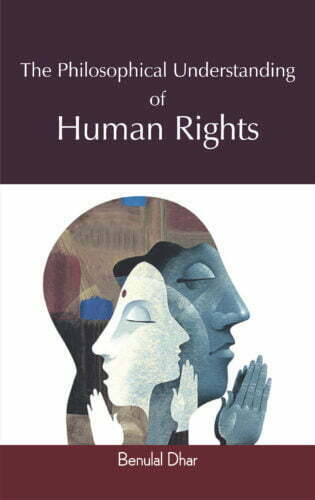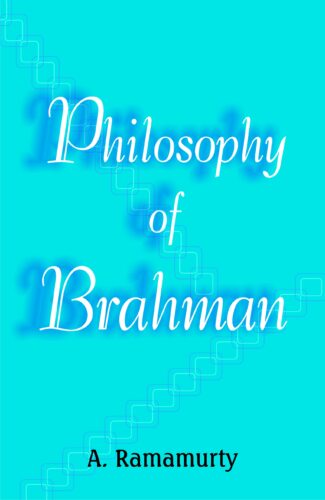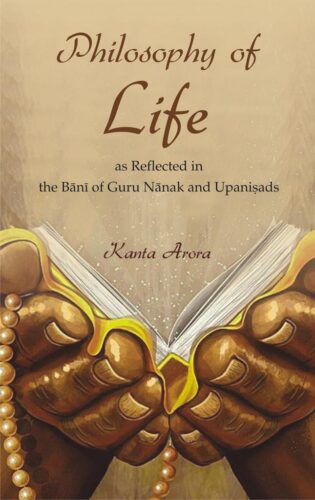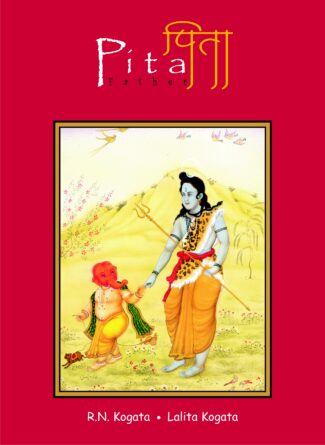Showing 681–690 of 1165 results

This collection of Prof. N.G. Kulkarni’s writings indicates a landscape of philosophical problems and reasoning towards an understanding of philosophical arguments. The book is divided thematically into four sections: Metaphysics; Language, Truth and Logic; Ethics and Religion; and Indian Philosophy.
This collection of Prof. N.G. Kulkarnis writings indicates a landscape of philosophical problems and reasoning towards an understanding of philosophical arguments. Like most philosophers Prof. Kulkarnis reflections also shaped his beliefs about fundamental notions like mind and body, truth and logic, reason and morality. His thoughts seem to move in both directions: the minute details and consequences of philosophical theses as well as the big picture, as it were, in terms of connecting the diverse themes of ones philosophical world.
The book is divided thematically into four sections: Metaphysics; Language, Truth and Logic; Ethics and Religion; and Indian Philosophy. Metaphysics deals with classic debates ranging from Kants critique of metaphysics, moving through Bradleys coherence theory of truth and the problem of universals and sense-data as well as problems of person and personal identity. Language, Truth and Logic surveys analytic philosophy and its main assumptions, and discusses the importance of logic and language that characterizes a significant part of the twentieth century and indeed shaped and continues to shape the twenty-first century. Issues in Ethics and Religion explore crucial ideas of freedom and violence, in addition to the meaning of the religious and the moral life. Indian Philosophy showcases his scholarly writings on Nyaya and Yoga as well as concepts in Jainism and Buddhism.
This volume should be of great interest to not only students and teachers of philosophy but also across disciplines. Anyone interested in understanding what philosophy is all about will learn one more way of thinking and doing philosophy.

This book investigates the doctrine of natural rights and its critiques, and assesses the world-view which has shaped formulation of the theories of natural rights. It presents a clear exposition of some contemporary philosophical theories of rights developed independently of the natural rights paradigm and discusses the theories wherein the conception of rights is found to be compatible with utilitarianism.
Human rights is a topic that gets vividly and seriously debated at varied platforms, globally. The concept of human rights has a rich philosophical and theoretical tradition, and its philosophical dimension deserves proper attention. Having given an account of the origins and historical development of the idea of human rights, the book investigates the doctrine of natural rights and its critiques, and assesses the world-view that has affected its formulations.
The work also presents a clear exposition of some contemporary philosophical theories of rights developed independently of the natural rights paradigm and discusses the theories wherein the conception of rights is found to be compatible with utilitarianism. And, finally, while briefly arguing for discursive understanding of human rights based on the diversity of morals that is embedded in different cultural traditions of the world and for reconstruction of the conception of human rights in more inclusive and cross-cultural terms, the author analyses the conception of human dignity from the Vedantic perspective as a case study, which is regarded as an important underlying principle of human rights.
The volume is intended to introduce students and practitioners of human rights, and general readers to the philosophy of human rights.

A profound work that addresses the major concern of ancient Indian metaphysical thought. Its discussion on the existence and nature of Brahman is simple and easy to understand. The book should be useful to scholars and students of Indian philosophy as well as to general readers.
This book is in one sense a critique of metaphysics usually viewed as an attempt to explain the existence of the world in terms of a reality which is regarded as the ultimate cause or source of the world, and in another sense to understand metaphysics as a profoundly significant attempt to know or understand the true or real nature of what is there, or what we all experience empirically, or the world. Most of the philosophers belonging to different schools of philosophy tried to understand the world in terms of a reality which is supposed to be the explanation of it. However, in the other approach to metaphysics which we discern in the philosophy of Shankara, and which is in tune with the basic insights of the Upanishads, a comprehensive attempt is made to know or understand the true or real nature of what we know empirically, or the world before any attempt is made to explain its existence. We therefore tried to analyse and understand critically the basic concepts involved in the ontological problem of Brahman, like the nature of the world, its causal explanation, nature and ontological status of matter, consciousness and its relation to spirit or self with a view to understanding the Advaitic insight that Brahman is the true nature of what we experience and know empirically, or the world.

The volume throws light on various issues and problems in classical Indian philosophical tradition concerning the structure of language and meaning, particularly referring to the theories and philosophies of Bhartrhari and Nyaya and Purva-Mimamsa philosophies of language. It also involves the contemporary western perspective in the course of analysis.
Philosophical query into the working of language has occupied an important place in the rich tradition of thought in India since the ancient times. This book throws light on various debates in classical Indian Philosophical tradition concerning the structure of language and meaning. Papers in this book have been arranged in four groups basing on their thematic composition. The book begins with the general issues relating to language as figured in classical schools of Indian philosophy. Papers dealing with the semantic structure of language as discussed by Bhartrhari in his Vakyapadiya follow this. The next set of papers is related to some of the important semantic notions of Nyaya philosophy of language. In this respect notions like sense, reference, proper names, meaning, etc., have figured in for discussion. The last set of papers is concerned with the import of sentences wherein papers dealing with Purva-Mimamsa are included. One of the significant features of this volume is that some of the issues and problems in Indian Philosophy of language have been approached from the contemporary Western perspective with a view to explicate and evaluate them in a better way and this would be of considerable interest to scholars and students of philosophy, particularly those involved in the study of classical Indian philosophy.

This volume illustrates, compares and discusses as to how Guru Nanak with his transcendental exposition, sharp skill, argumentative capability and common poetic language further enriched, explained, simplified, modernized and expressed various theological and philosophical concepts elucidated in Upanishads for the understanding and adaptation of a common man.
This volume illustrates, compares and discusses as to how Guru Nanak with his transcendental exposition, sharp skill, argumentative capability and common poetic language further enriched, explained, simplified, modernized and expressed various theological and philosophical concepts elucidated in Upanishads for the understanding and adaptation of a common man. Upanishads are breath of eternal and hymns of Guru Nanak are a divine song of life. Guru Nanaks exuberance of love and search for God and godly people was not confined to any religion or religious institution. He revolted against the ritualistic mind of a brahmana. He was essentially a man of God whose love and quest for search for the Ultimate Truth knew no limits. In the pursuit of this search he enjoyed a reach to the state of void meaning a state where there is no distinction between the object and the subject the knower and the known. He was a protagonist of Bhakti tradition and stressed more on bhakti or devotion to God. He taught the Sahaja-Patha or Surata Shabada Yoga that easily takes one straight to the Lord by spontaneous concentration of mind.
Both hymns of Guru Nanak and Upanishads explain that the real aim of human life is to attain liberation from the repeated coming and going in incarnations, which can be attained by adequate karma, knowledge and disciplined meditation.

The book focuses on meaning and linguistic representations, and links them to propose a representational theory of meaning. It shows that meaning as truth-conditions and as justification-conditions are equally rooted in the semantic space of language-use.
Surveying all the landmark developments in the recent philosophy of language, the book focusses on meaning and linguistic representations in its thematic effort to propose a representational theory of meaning. Meaning is the autonomous component of language: its semantic content and its essence as well. The book, thus, tries to link meaning with linguistic representations which, in themselves, not only are logico-grammatical structures, but also represent the world around us. Also attempting to reconcile the conflicting claims of the realists and the anti-realists, the author demonstrates how we have no choice between meaning as truth-conditions and meaning as justification-conditions, since both are equally rooted in the semantic space of language-use involving linguistic representations. Dr. Pradhans analyses have, at their base, his indepth, critical study of the theory of linguistic representation in Frege, Wittgenstein, Davidson, and Dummett. In sum, the book lends a forceful support to semantics and, more specially, to the autonomy of meaning. And the theory of representation, argued for here, promises to fulfil the twin theses of representationality and autonomy of meaning. It is an insightfully analytical work of immense usefulness to the scholars of philosophy concerned with linguistic representation, semantics and meaning.

The book presents the essence of the philosophy of Narayana Guru, the noted philosopher-saint of modern India who reintroduced the essential Upanisadic content with a fresh appeal. Based on a thorough study of his works, it deals with his thought on ethics, aesthetics, religion, rituals and casteism.
Narayana Guru (1854-1928), a much-revered philosopher-saint of South India, revisualised the essential Upanisadic thought with a freshness of perspective. Further, he applied basic aspects of his Upanisadic philosophy successfully to bring about radical social transformations. This book deals with his philosophy as discussed in his major work, Atmopadesa Satakam (One Hundred Verses of Self Instruction) but incorporates views and ideas from his other works as well. The work focuses on Narayana Gurus philosophic thought dealing with the meaning of Vedanta, the way to seek Reality, the role of the individual in life, and karma, maya, the atma’s (self-)manifestation and sat-cit-ananda as the definition of the atma or Brahman and as the final goal. The various concepts are explained in relation to one another and from the viewpoint of achieving the final goal in life to present a unified thought construct that forms the core of Narayana Gurus philosophy. It also takes up the application of his Upanisadic philosophy in different disciplines like ethics and aesthetics and in practice of religion, temple-related matters and rites. The book will be particularly useful to scholars, teachers and students of Vedanta as well as all educated seekers of Reality.

Noted Indian philosophers present an open-minded evaluation of Wittgensteins philosophy of language from fresh perspectives to bring out its contemporary significance. They examine Wittgensteins theories on the limits and structure of language, operationalism in philosophy of language, idea of a private language, necessity of mathematics and logical truths, and grammar of the language of emotions.
The book is open-minded evaluation of Wittgensteins philosophy of language from fresh perspectives to bring out its contemporary significance. Including papers presented by noted Indian philosophers at a naional seminar, it examines the special place of WIttgenstein in the development of philosophy in the West in the twentieth century. The papers offer an in-depth critique of Wittgensteins theories on the limits and structure of language, operationalism, in philosophy of language, idea of a private language, necessaity of mathematics and logical truths, grammer of the language of emotions and language as a liberating force. Throughout the attempt is to analyse Wittgensteins contributors vis-a-vis Indian philosophical thinking and trace and the similarities between him and Indian thinkers. The work, for instance, includes a detailed study of Wittgensteins notion of silence and its affiliations with silence as interpreted in the Nyaya system and identifying the common factors in Gandhi and Wittgensteins approach to western civilisation. It also presents a radically different understanding from what is traditionally understood of the Wittgensteinian concept of picture. The work will prove immensely useful to scholars concerned with linguistic representation and meaning in general and Wittgensteins contributors to philosophy of language in particular.

Using case studies from pilgimages around the world undertaken by the devout, the volume explores the ways many of the pilgrimage traditions have started and evolved. The book deals with pilgrimages not only in India but also in several countries abroad.
Pilgrimage involves movement of people, either as individuals or as members of a group, in search of the sacred. Spontaneous behaviour, miraculous events, and/or ecstatic visions of individual pilgrims have often resulted in complexity in ritual, meaning, and movement. Pilgrimages may start with individual ecstatic visions, unusual strange unworldly experiences, which are the experiences of ordinary people, certainly not of priests or politicians. Often they are uniquely human experiences which embarrass ecclesiastical authorities.
As a pilgrimage tradition evolves, sacred sites may become formalized in organized socio-political systems with economic overtone. Even in these structured situations, individual people may still have powerful individual experiences. Eventually a pilgrimage tradition may be taken over by religious and political authorities, lose spontaneity, and become frozen in time. But even in these situations, in which large numbers of people may gather, there is a tremendous amount of primal energy in which innovations and visions may be evoked.
Using case studies from pilgrimages around the world, the volume explores the ways many of these traditions have started and evolved. A common perspective is that of self-organization of complex structures in space and time.
The variety of pilgrimage described in the book is remarkable. The subcontinent of India is the location of many sites such as the temples to the nine planets in Tamil Nadu, the pilgrimage circuits of Varanasi, early Buddhist pilgrimages in Sanchi and Bodh-Gaya, the great ruined city of Vijayanagara, those associated with the Ramayana, and the death ceremonies at Gaya. Beyond India, the self-organization and stability of pilgrimage systems are analysed for pilgrimages in Nepal (Kathmandu), Japan, Mexico, the Caribbean, Peru, Norway, and the US.

From time immemorial a family Þ consisting of father, mother, son, his wife, and their childern Þ has been accepted as a sacred institution in all societies Þ urban, rural, tribal or uncivilized, or even among animals to a certain extent. In the family, besides love and affection, the main factors cementing the bond between members are some virtues and morals like obedience, faithfulness, honesty, and, above all, chastity, not only for women but also for the men. In Hindu thought Lord Shiva and Goddess Parvati are considered the ideal parents as well as the ideal couple. In four books Þ Pita, Maa, Pati and Patni Þ pleasingly embellished with self-explaining paintings, Mr K.N. Kogata and Mrs Lalita Kogata have extolled the roles, activities, and moods of these important members of the first family with charming and delightful verses.
Taittiriya Upanishad says, Pitru devo bhava consider your father as a god. We owe our existence to our father and mother, and in that sense they are our creators and therefore, gods. We cannot see God, the Creator of this universe, in person and offer our respects to Him. To make matters easy for us, God created father and mother and presented them before us in flesh and blood. By serving our father and mother we can pay back at least a little portion of the debt we owe to God for our existence and for the stage we have reached in life. Our epics, Puranas, Upanishads, etc. all extol the father as of utmost importance in society. Subhashita Manjari mentions five persons who are to be treated as father one who gives birth, one who initiates, one who teaches, one who feeds, and one who protects us from fear. Practically speaking, our biological father does all these five activities he is the cause of our birth, he initiates us as a brahmachaari by performing the Upanayanam ceremony, he teaches us how to live in the world with honour and dignity, he feeds us, and he protects us, his children, from all kinds of fear. As such, our efforts to serve and please our father should be fivefold. Aadi Shankaraachaarya sees, in Annapurnaashtakam, Lord Shiva and his consort Parvati as father and mother. In a similar way, the Kogatas have seen Shiva as the universal father and portrays him in the book along with mother Parvati in different activities and moods in pleasing illustrations which are further beautified by sweet and delightful verses.
| There are no products |